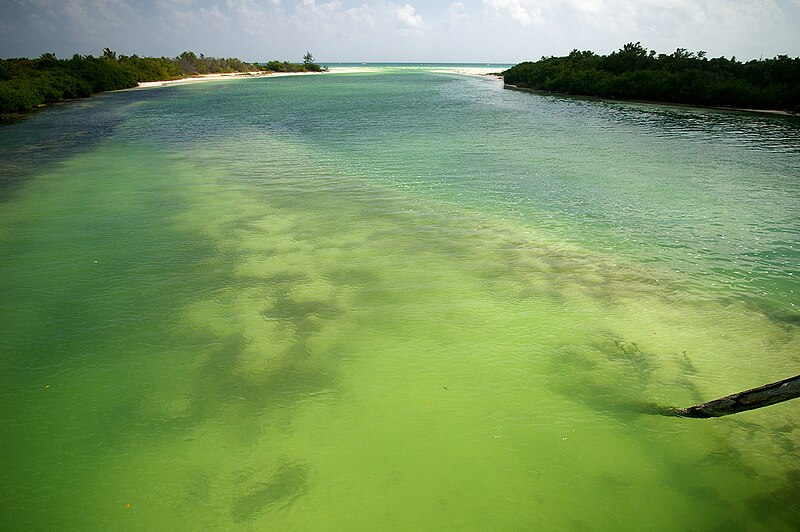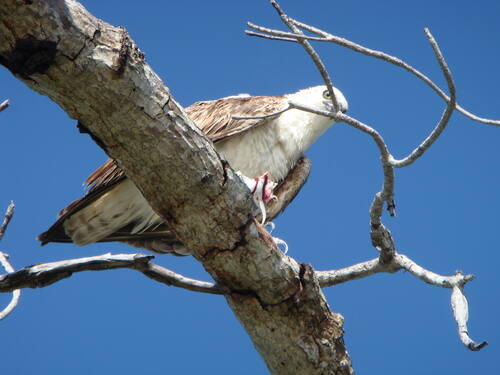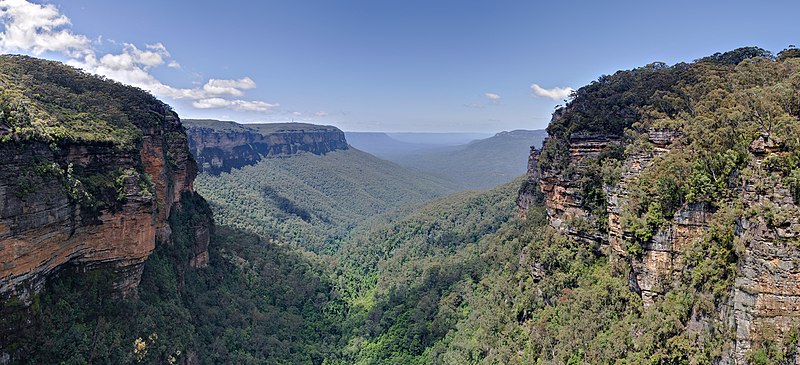Aish, No body would ignore the beauty of this
city Ex-Travel-Ganzer, many people has been planning to see this place since
along time ago, the wonderfull view, exotic experience and unforgetable moment
which hard to be described. Many galleries of photo show how this place offer
undeniable journey. Yes, yes. We are going to visi Venice and its lagoon in
Italy “Kick The Ball” Country.
Venice is regarded by many as one of the most enchanting
cities of the world. For much of the Middle Ages and the Renaissance Period, it
was also the wealthiest in Europe, when it was a major maritime power, banking
on its strategic location as the gateway for commerce between Asia and Europe.
Venice is a unique artistic achievement. The
city is built on 118 small islands and seems to float on the waters of the
lagoon. The influence of Venice on the development of architecture and
monumental arts has been considerable. Venice possesses an incomparable series
of architectural ensembles illustrating the age of its splendour. It presents a
complete typology whose exemplary value goes hand-in-hand with the outstanding
character of an urban setting which had to adapt to the special requirements of
the site.
In this lagoon covering 50,000 km2,
nature and history have been so closely linked since the 5th century AD when
Venetian populations, to escape barbarian raids, found refuge on the sandy
islands of Torcello, Iesolo and Malamocco. These temporary settlements
gradually became permanent and the initial refuge of the land-dwelling peasants
and fishermen became a maritime power. The small island of Rialto was chosen as
the headquarters of the new city.
The
name Venice is believed to come from an ancient tribe known as Veneti, which
was mentioned by Homer as the Eneti. The city historically was the capital of the Venetian
Republic. Venice has been known as the "La Dominante",
"Serenissima", "Queen of the Adriatic", "City of
Water", "City of Masks", "City of Bridges", "The
Floating City", and "City of Canals". Luigi Barzini described it
in The New York Times as "undoubtedly the most beautiful city built
by man". Venice has also been described by the Times Online as
being one of Europe's most romantic cities.
Venice, the island city, was founded in the
5th century. From 697 onwards the Republic of Venice, also called the
Serenissima, was ruled by doges. In the 9th century the remains of St. Mark
were brought from Alexandria (Egypt) and are kept in the Basilica of San Marco
(consecrated in 1094). In the 11th century Venice became a maritime power in
the Mediterranean Sea. In the 15th century the dominance of Venice started to
decline. The Republic of Venice was ended in 1797 and it became part of Italy
in 1866.
Venice located in northeast
Italy which is renowned for the beauty of its setting, its architecture and its
artworks. It is the capital of the Veneto region. In 2009, there were 270,098
people residing in Venice's comune (the population estimate of 272,000
inhabitants includes the population of the whole Comune of Venezia; around
60,000 in the historic city of Venice (Centro storico); 176,000 in Terraferma
(the Mainland), mostly in the large frazioni of Mestre and Marghera;
31,000 live on other islands in the lagoon). Together with Padua and Treviso,
the city is included in the Padua-Treviso-Venice Metropolitan Area (PATREVE)
(population 1,600,000).
Venice is one of the most
important tourist destinations in the world, due to the city being one of the
world's greatest and most beautiful cities of art. The city has an average of
50,000 tourists a day (2007 estimate). In 2006, it was the world's 28th most
internationally visited city, with 2.927 million international arrivals
that year. This site also protected by Unesco as World heritage for few
criterian such follow:
Selection criteria:
- to represent a masterpiece of human creative genius;
- to exhibit an important interchange of human values, over a span of time or within a cultural area of the world, on developments in architecture or technology, monumental arts, town-planning or landscape design;
- to bear a unique or at least exceptional testimony to a cultural tradition or to a civilization which is living or which has disappeared;
- to be an outstanding example of a type of building, architectural or technological ensemble or landscape which illustrates (a) significant stage(s) in human history;
- to be an outstanding example of a traditional human settlement, land-use, or sea-use which is representative of a culture (or cultures), or human interaction with the environment especially when it has become vulnerable under the impact of irreversible change;
- to be directly or tangibly associated with events or living traditions, with ideas, or with beliefs, with artistic and literary works of outstanding universal significance. (The Committee considers that this criterion should preferably be used in conjunction with other criteria).
Tourism has been a
major sector of Venetian industry since the 18th century, when it was a major
center for the Grand Tour, due to its beautiful cityscape, uniqueness, and rich
musical and artistic cultural heritage. In the 19th century, it became a
fashionable centre for the rich and famous, often staying or dining at luxury
establishments such as the Danieli Hotel and the Caffè Florian. It continued
being a fashionable city in vogue right into the early 20th century. In the
1980s, the Carnival of Venice was revived and the city has become a major
centre of international conferences and festivals, such as the prestigious Venice
Biennale and the Venice Film Festival, which attract visitors from all over the
world for their theatrical, cultural, cinematic, artistic, and musical
productions.
Today, there are
numerous attractions in Venice, such as St Mark's Basilica, the Grand Canal,
and the Piazza San Marco, to name a few. The Lido di Venezia is also a popular
international luxury destination, attracting thousands of actors, critics,
celebrities, and mainly people in the cinematic industry. The city also relies
heavily on the cruise business.
However, Venice's
popularity as a major worldwide tourist destination has caused several
problems, including the fact that the city can be very overcrowded at some
points of the year. It is regarded by some as a tourist trap, and by others as
a 'living museum'. The cruise ships that use the Giudecca Canal send a large
wake toward the city, that slowly causes the city to sink. Unlike most other
places in Western Europe, and the world, Venice has become widely known for its
element of elegant decay. The competition for foreigners to buy homes in Venice
has made prices rise so highly that numerous inhabitants are forced to move to
more affordable areas of Veneto and Italy, the most notable being Mestre.
The
classic form of transportation in Venice is the gondola. Today it is
mostly used by tourists as well as for weddings, funerals and other ceremonies.
The main form of transportation is not by gondola, but by vaporetti, or
ferryboats.
The
best way to see Venice is on foot. Get out your walking shoes as they will be
in good use.It is very easy to get lost in Venice, due to the many alleyways
and canals which, after a while, tend to look the same. Even maps provided by
hotels may be inaccurate or not sufficiently detail. Being on a cluster of
islands, you won't wander off it, but you'd certainly lose precious time trying
to retrace your steps. One tip is, each time you cross a bridge (and there'll
be plenty), to note the house numbers before and after. Another useful tip is
to take digital photographs whenever you are at a crossroad, and use the shots
to remind yourself the way back. It is recommended that you photograph the view
behind you - for that's the direction you need to head on your return. when
looking at signs, locations and bridges are marked "Per" followed by
the name of the sight. Hence "Per S Marco" points to St Mark's
Square. All in all, the experience of Venice comes from exploring its
kaleidoscopic sights, even getting lost on occasion.
How To Get To Venice and Its
Lagoon.
Venice is
served by the Marco Polo Airport (VCE) in Mestre, on the mainland coast of
Italy, within sight of Venice. Treviso Airport is a smaller airport of budget
airlines such as Ryanair, SkyEurope and Transavia.
From the
airport, you can catch the bus to Venice. The shuttle bus between Marco Polo
Airport and Venice costs €3.00. Alternatively, you can take a boat at the
Alilaguna Waterbus Jetty, which is just 10 minutes walking distance from the
airport terminal. The fare of €12 gives you a leisurely 80-minute ride to
Piazza San Marco via Murano, Lido and Arsenale. To arrive faster in Venice, you
can also opt for a water taxi, which costs €100 for a ride to Piazza San Marco
in 30 minutes. The cheaper €6.00 boat goes to Fondamente Nuove, a journey of 30
minutes.













 6:18 PM
6:18 PM
 Unknown
Unknown



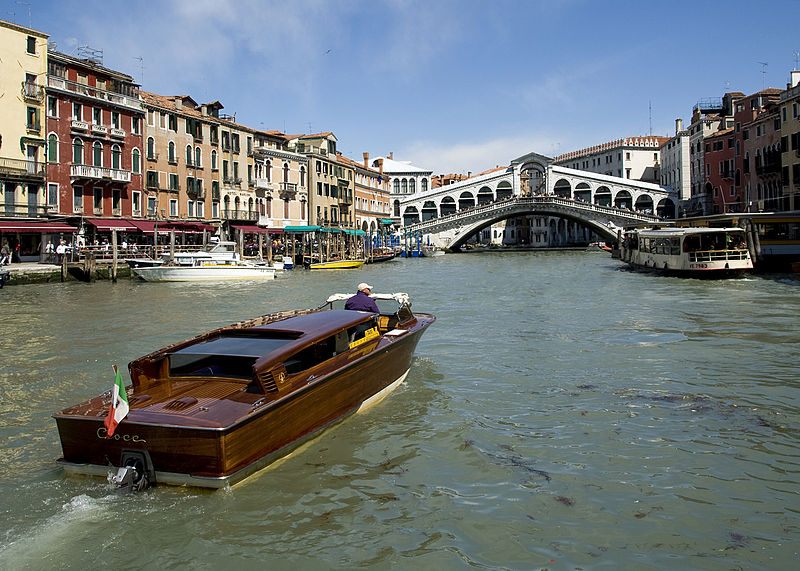

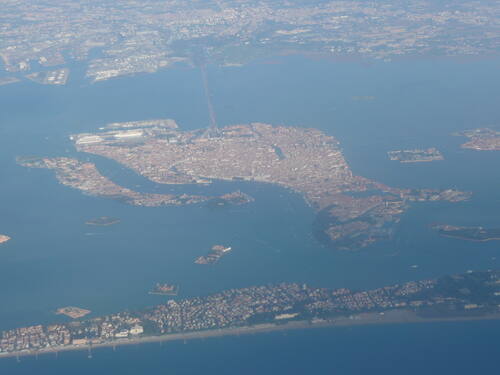

 Posted in:
Posted in: 





